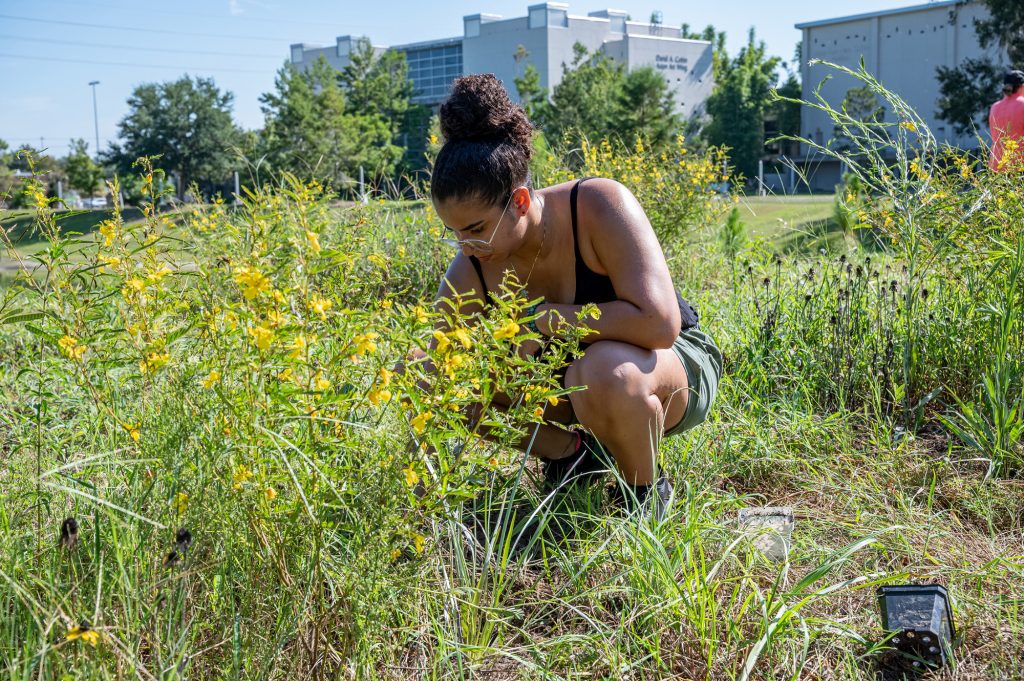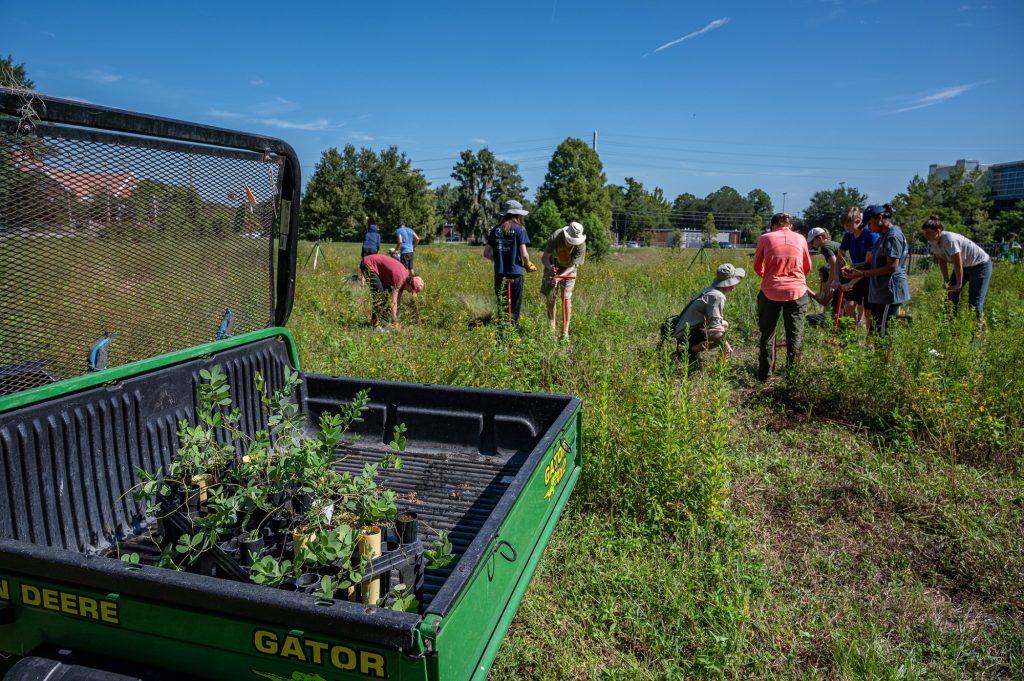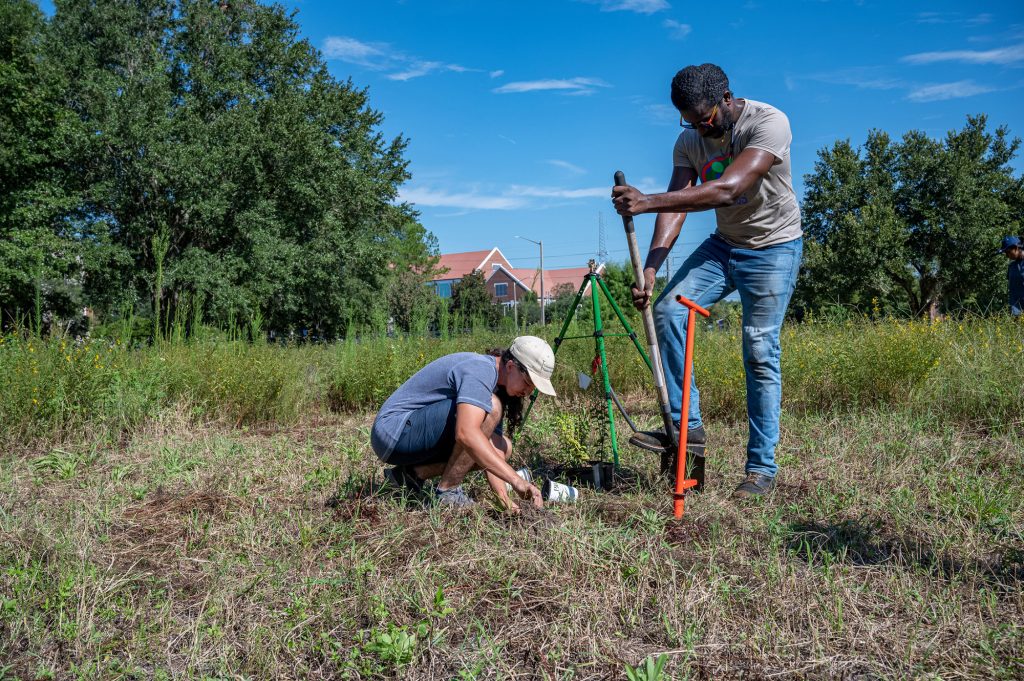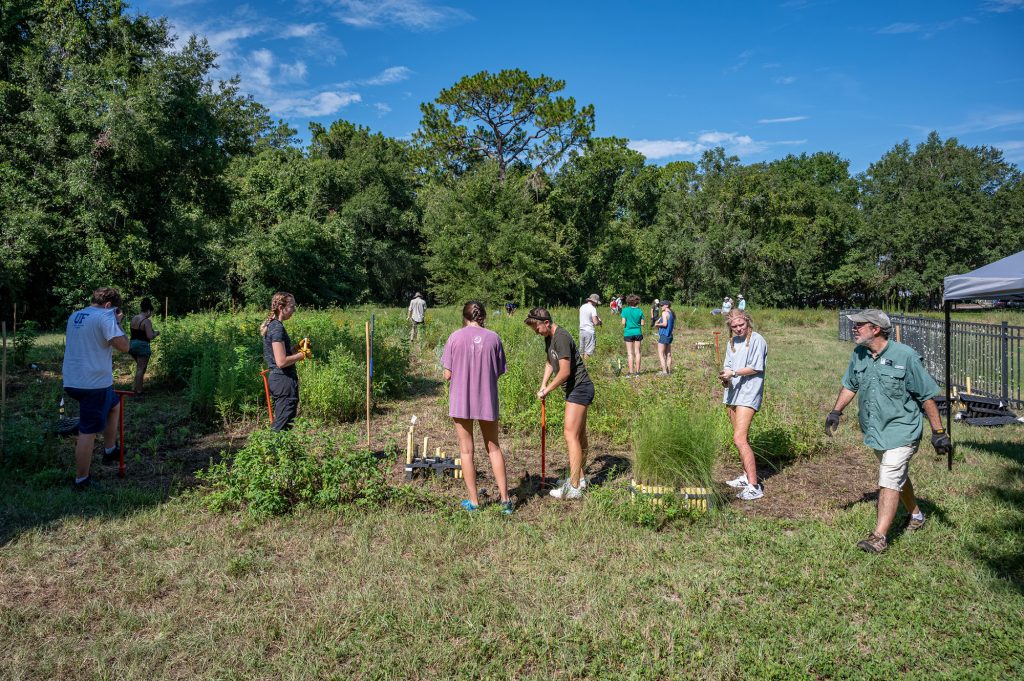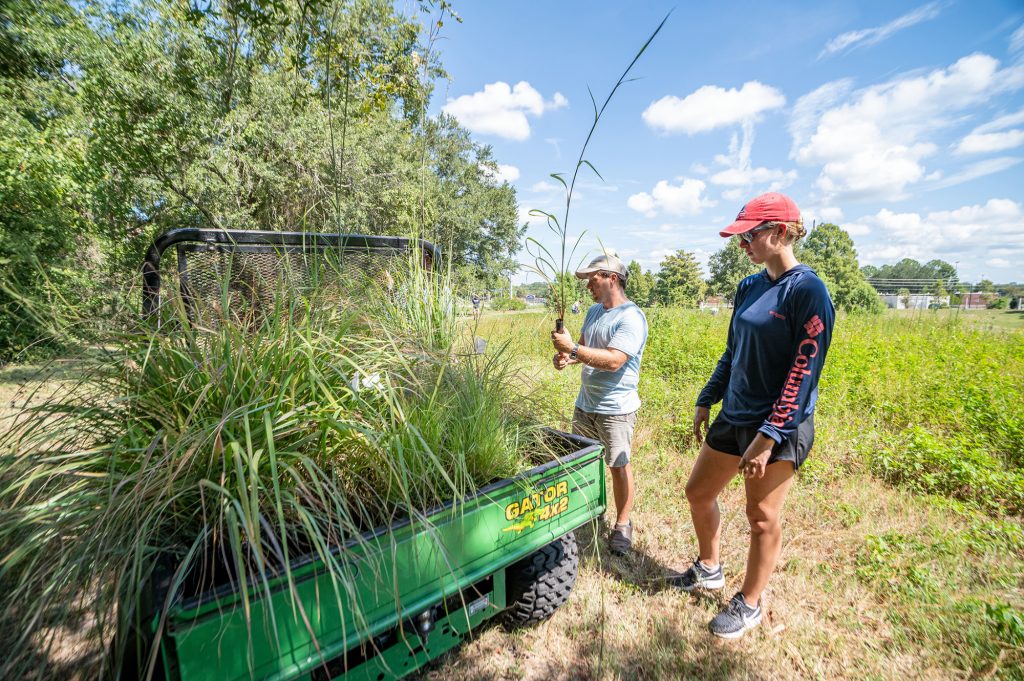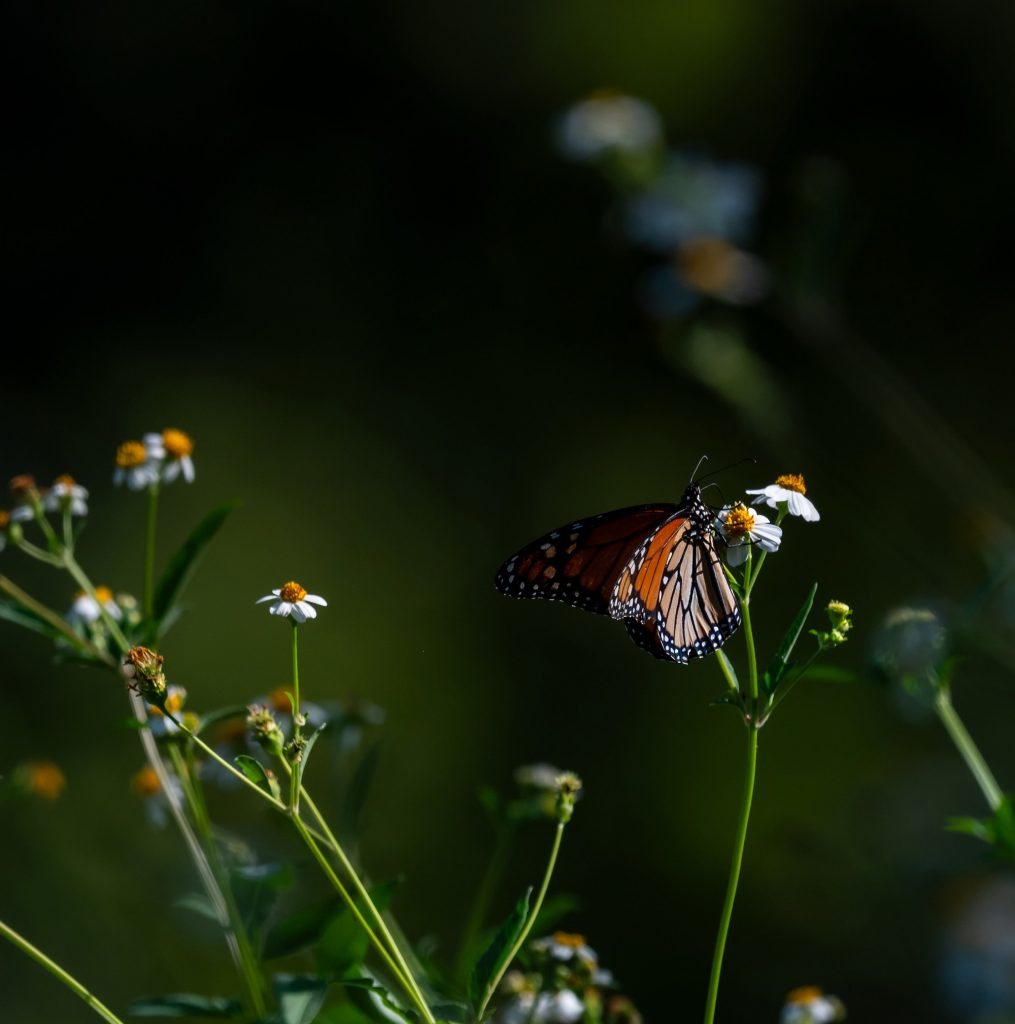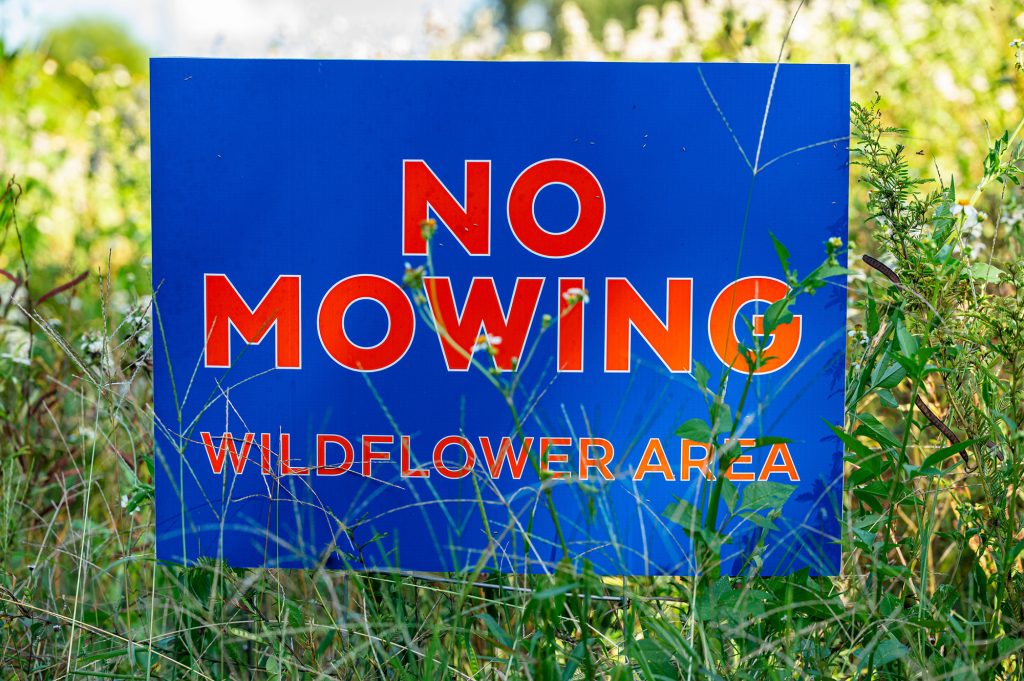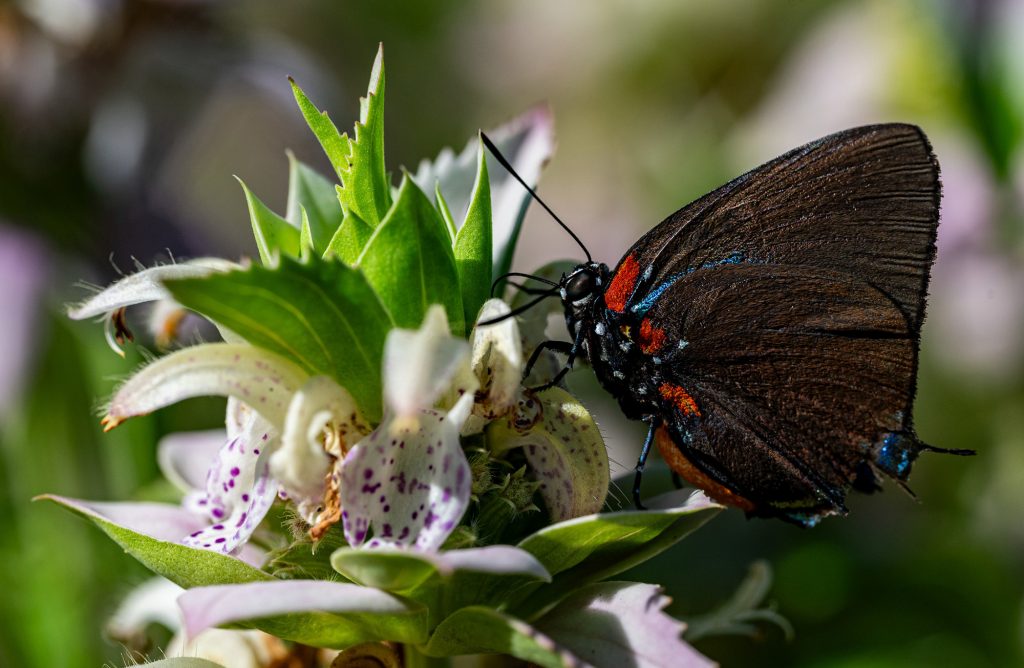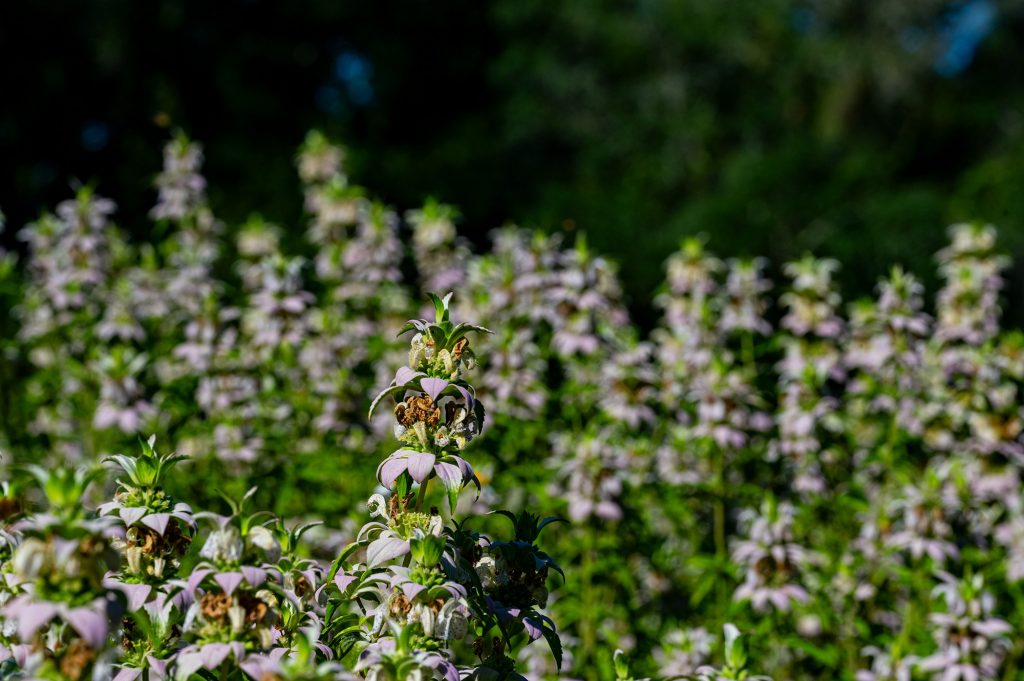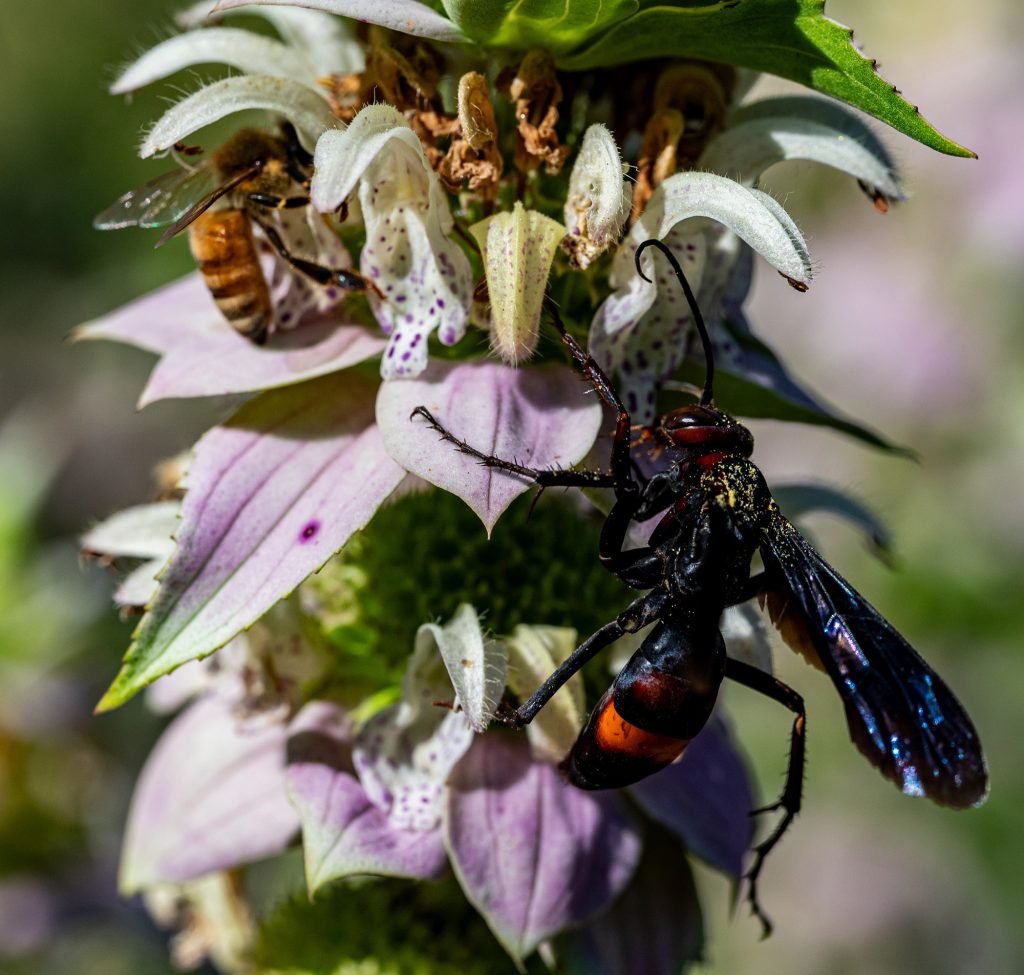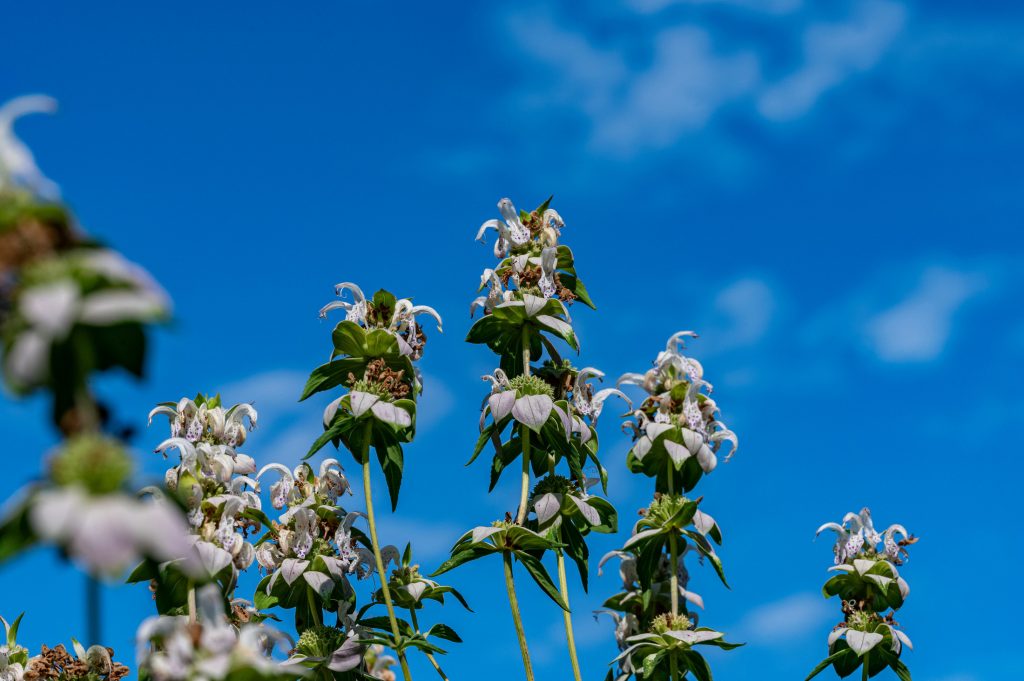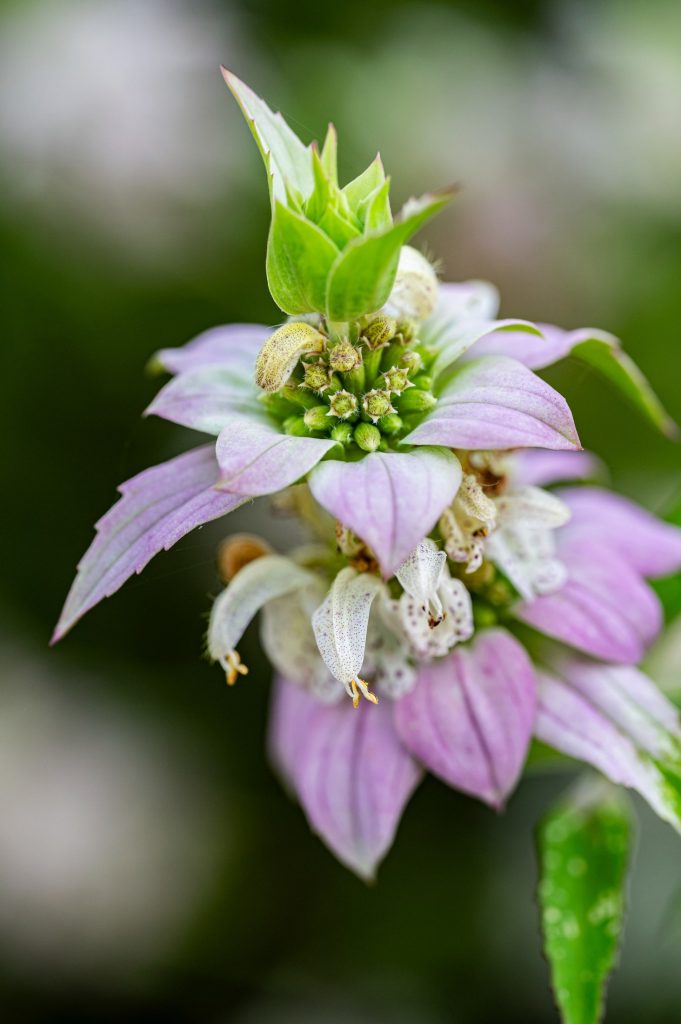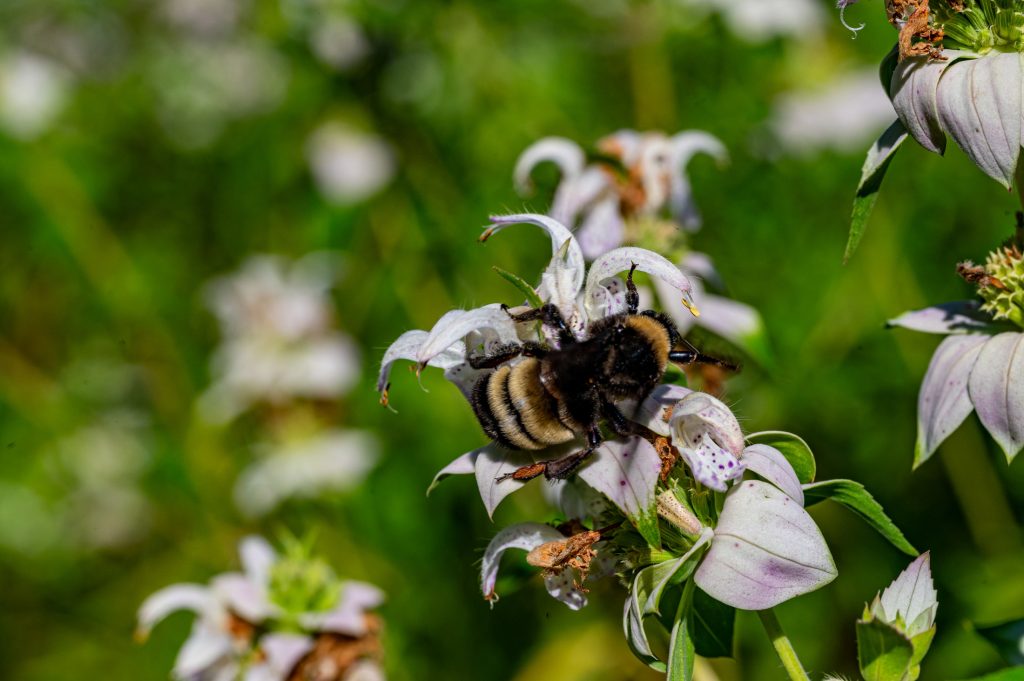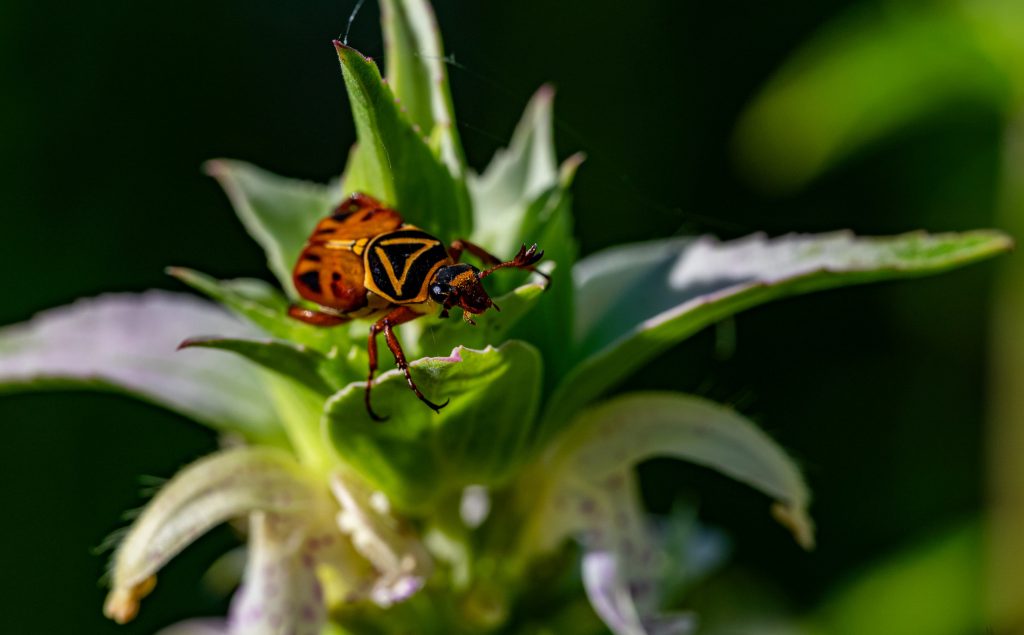Standing in the Florida Museum’s backyard, eyes closed, face turned to the sunlight, you can hear a hushed murmur of thousands of insects dancing across the sea of wildflowers. This is not a manicured garden with neat beds of easily recognized plants from a big box store. Our Daniels Lab team has been intentionally rewilding this small corner of campus for several years now — specifically, to prove a point.
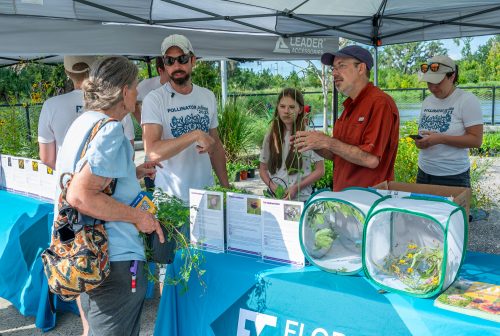
Jaret Daniels studies the ecology of pollinating insects across the Southeastern U.S. and has been collaborating with a vast assortment of agencies and partners to turn research into real-life conservation efforts. While big changes are needed at many levels to address insect declines and restore populations of at-risk species, he is also thinking outside the box—or rather looking into the little boxes to find more ways to support vital insects.
He wants to explore how creating natural habitats within urban and suburban environments can revitalize the local populations of not just insects, but the plants and other wildlife that rely on them.
Why not practice in our own backyard? Here on the University of Florida campus, there are many pockets of natural spaces protected from development and conserved for wildlife. But this meadow behind our museum building, adjacent to a busy city roadway, was a great spot to study how rewilding a space could invite pollinators and other insects back into an area recently devoid of resources for them.
In 2020, Jaret and his team collaborated with UF Facilities Services to mow the area only when requested at the end of the flowering season and then seeded the field with six species of native and naturalized plants. They seeded again a year later, regularly noting the changes in the plant and insect diversity over time.
And then came the big planting event. In 2022, with the help of the UF Native Plant Nursery and dozens of volunteers sweating in the August sunlight, they planted over 6,000 native grasses and wildflowers in the primed meadow. In total they brought in 19 different species of plants. And then waited to see what would happen.
Regular surveys of plants and insects help researchers understand what flourished and how those small changes blossomed into vibrant pollinator communities. While they focus on familiar pollinators like bees and butterflies, there are many different types of insect pollinators that can be found in the meadow.
Building on this success, the research team is looking across the UF campus at other spaces to rewild. The goal is to show that creating a network of small native plant habitats can create a broader insect wildlife corridor through areas traditionally considered dead zones for plant and insect diversity. Weaving native plant gardens into human occupied environments can bring the music of bees and the delicate dancing of butterflies to unexpected places.
Today the dotted horsemint (Monarda punctata) is stealing the show. Wasps, bees and butterflies are charging from clump to clump to investigate every freckled trumpet-shaped flower before careening away, covered in pollen. With over 300 species of just bees living in Florida, it can be challenging to count all the species zipping around in this meadow on a sunny afternoon. Which means our researchers can mark this as a successful experiment to better support our pollinators.
Thank you to Jaret Daniels, Kristin Rossetti, Matt Standridge, Jon Elmquist and the rest of the Daniels Lab team for including the Florida Museum in this fantastic research project. This collaboration between Daniels Lab, UF Facilities Services and UF Native Plant Nursery has invited many species of plants and animals back to our backyard.
